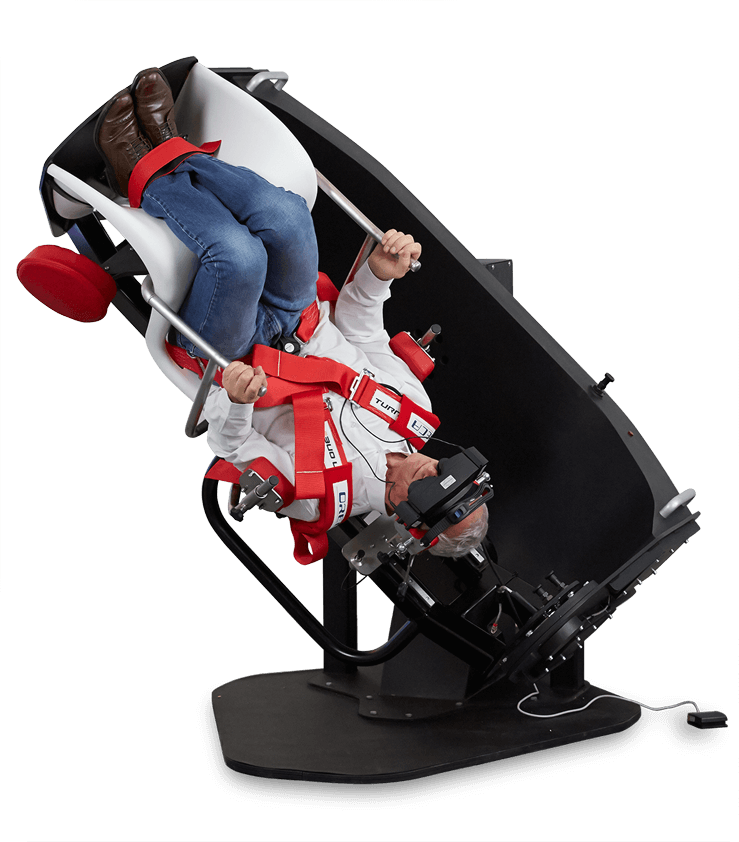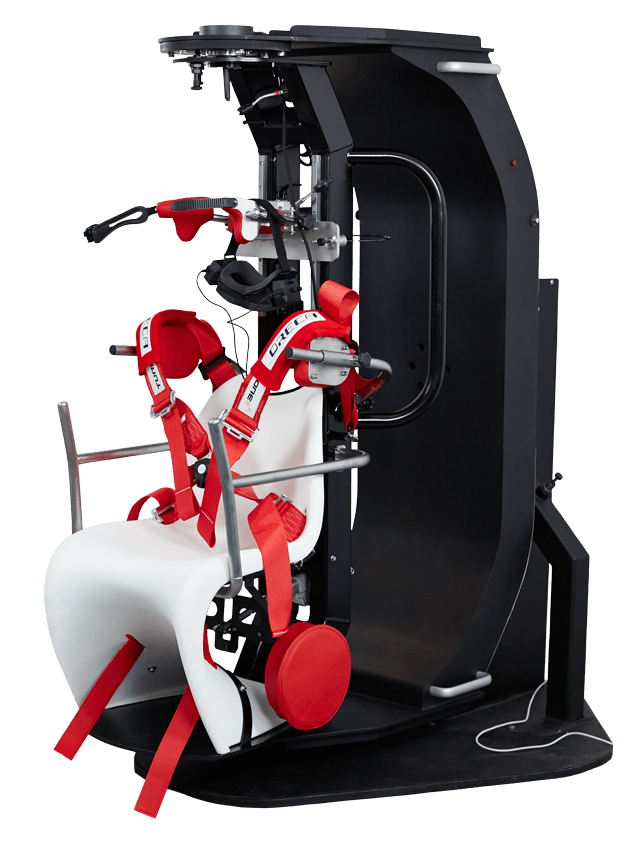

Balance Quest
TRV Chair
BPPV treatment made comfortable
The TRV Chair is a unique tool for the diagnosis and treatment of benign paroxysmal positional vertigo (BPPV). With the TRV Chair, examiners can rotate their patients 360 degrees along the plane of each semicircular canal. It is also possible to lock the patient in any position for a detailed look at each semicircular canal.
Requires VisualEyes™ software
Why is the TRV Chair an important tool in BPPV patients?
BPPV is the most common cause of otogenic vertigo. However, positional testing can be difficult or impossible with certain patient groups. This includes patients that are heavy, disabled, elderly or who have neck issues. Thus, a large portion of BPPV patients cannot be treated with conventional methods.
Designed for BPPV diagnosis and treatment
The patient is secured by a four-point harness, a leg strap, shoulder pads and a head mount. Eye movements are displayed on-screen using the VisualEyes™ Video Frenzel system.

Increase the success rate of your BPPV treatment
The rehabilitation of patients with benign paroxysmal positional vertigo (BPPV) commonly involves maneuvers such as the Epley and Semont maneuvers. By adding kinetic energy to these maneuvers, the TRV Chair can cure the dizzy patient.
Kinetic energy can conquer nystagmus
The TRV Chair's ability to transmit kinetic energy is a powerful tool in the canalith repositioning procedure. Kinetic energy will accelerate the movement of free-floating calcium-carbonate crystals, also known as otoconia. Dizziness or vertigo are often the symptoms of wrongly-located otoconia within the inner ear. Kinetic energy is thus often the only feasible treatment for patients with canalithiasis, who experience positioning-related nystagmus due to wrongly-located otoconia.
How does the TRV Chair transmit kinetic energy?
The kinetic energy is added by driving the main arm of the TRV Chair against a hydraulic stop. This produces a mild deceleration, which relocates even the smallest otoconia, thereby securing a successful treatment.
Unsurpassed diagnosis of benign paroxysmal positional vertigo (BPPV)
The 360-degree rotation allows for each semicircular canal to be stimulated individually and in its extreme position. This provides optimal diagnostic value and allows for reliable and repeatable maneuvers. Using a chair for positional maneuvers rather than traditional bedside methods also allows for prolonged testing, without patient discomfort.
Safe and comfortable BPPV testing for all patients
As the patient is securely and comfortably locked into position, treatment is available for all patient groups with the TRV Chair. Prior, patients with neck conditions and elderly, heavy or physically disabled patients were unsuitable for positioning maneuvers. This rendered a large group of patients without a means to treat their dizziness or vertigo.
Integrated goggles for a detailed look at nystagmus
The integrated VisualEyes™ Video Frenzel system enables the clinician to observe fixation-free nystagmus with great detail. The eye movements are displayed on a large screen for a good visual of positioning-related nystagmus.
Need support or training?
Check out the latest training material for the TRV Chair.
Contact your local distributor
Our world-wide experts and distributors can help you find the best solution for you and your clinic. They also know what products are available in your market. Fill out the form and your local distributor will contact you with more information.
Distributors
Purchase from one of our trusted distributors.
Support
Need product training? Visit our training site to find answers.
